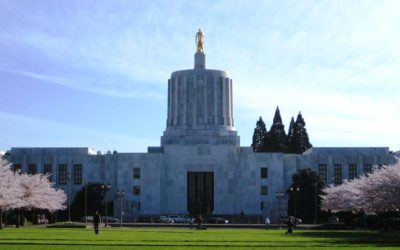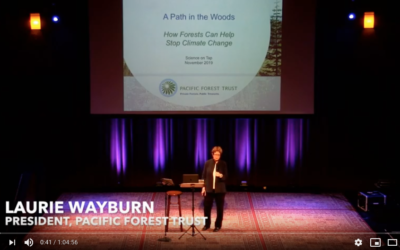What We Do:
Advance Climate Solutions
Our climate is rapidly changing due to the excess buildup of heat-trapping gases—especially carbon dioxide—blanketing the Earth. Conserving, restoring, and replanting forests will safeguard natural processes that regulate climate-altering gases in our atmosphere.
CO2 is the most abundant climate-altering gas in our atmosphere, making up over 80% of the total greenhouse gas emissions by the U.S. Forests naturally remove CO2 from the atmosphere, storing carbon within their trees, herbaceous plants, and soils. Forests absorb between 17 and 20% of CO2 emissions globally and could reach double that if we conserve, reforest, and restore older forests.
Forests are an essential part of the climate change solution, but policies to leverage the natural power of forests to combat climate change have lagged behind those to reduce fossil fuel emissions. By pioneering policies and incentives to enable conservation and restoration of contiguous, working forest landscapes, and promote sustainable forest management, we have demonstrated powerful, effective new ways to lower net CO2 emissions. In so doing, we also conserve America’s forests for all of the benefits they provide.
How We Advance Climate Solutions
We Develop Climate Policies and Incentives
Forest conservation, restoration, and carbon management are central to our climate strategy. With unprecedented rise in CO2 emissions, conserving whole forest landscapes is more important than ever.
We develop pioneering, practical, incentive-based policies that leverage the power of forests–and other natural lands–to reduce CO2 emissions. We provide the science that demonstrates and supports the role that forests must play if we are to have a safer planet with a livable atmosphere. We led the inclusion of forests in California’s landmark climate policy, AB 32– the Global Warming Solutions Act–the first economy-wide climate policy to include forests, globally. We also led the process that developed the first accounting standards for offsets under California’s system. Those offsets require standardized accounting, transparent third party verification, permanence, and natural forest management. Our van Eck project was the first project registered under this system, demonstrating its practicality and market success.
The climate policies and incentives we develop to conserve and restore resilient forested landscapes have synergistic outcomes of increasing carbon stores, improving wildlife habitat, protecting sources of clean water and improving communities whose economies depend on sustaining forests.
Forests contribute more to climate change solutions than offset projects alone by working with the forest sector as a whole, California could achieve emissions reductions on the scale of 120 to more than 200 million metric tons by 2030.
Our Work Is The Foundation Of The Forest-Carbon Market
The capacity of forests to store carbon and reduce atmospheric CO2 can bring added revenue to landowners through the emerging market in forest carbon offset credits. In this market, forest owners who manage for real climate benefits can sell these gains to entities seeking to offset CO2 emissions.
Building on California’s carbon market success, we believe that a regulatory framework with high standards leads to a market with solid returns for forest landowners who manage for climate benefits. California’s approach to offsets has now been adopted in 11 states and provinces in the U.S. and Canada and provides a national model for successfully integrating forests into national climate policies. Projects cover over 2 million acres in 22 states, serving as a national model for successful forest carbon offsets.
HOW YOU CAN HELP
Help conserve America's forests.
Stay in-the-know. Get the latest news.
Current Projects & News
ForestLife Summer 2023
In this issue: managing for climate resilience on Mt. Ashland, conserving the Trinity River headwaters, harnessing nature to address climate change, and more!
PFT supports Oregon climate bill SB 1530
On February 11, 2020, PFT submitted a letter to express our strong support for SB 1530, a bill in the Oregon Legislature which will reduce climate emissions in Oregon and invest in forests and other natural and working lands.
Science on Tap with Laurie Wayburn: Forests and Climate
PFT President Laurie Wayburn was the featured speaker at Science on Tap on November 19, 2019 in Portland, Oregon. Watch her presentation on forests and climate here.



